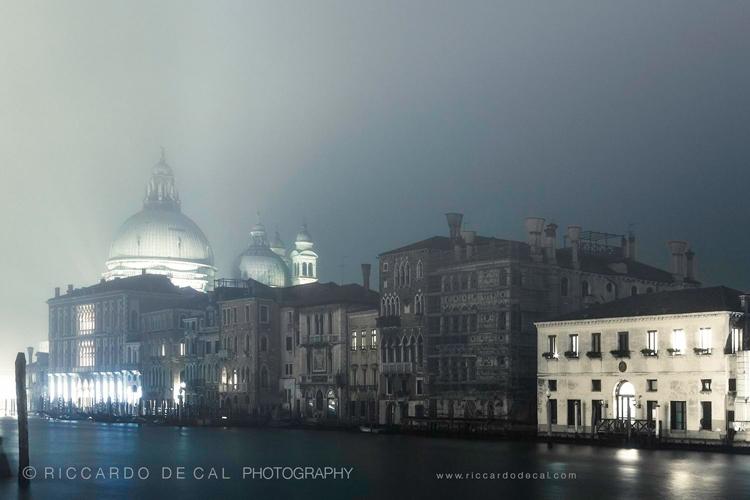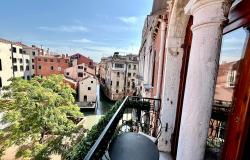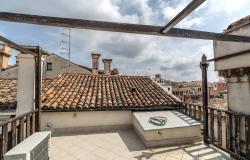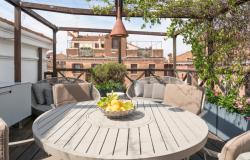“The Dream of Venice series is an exploration into understanding Venice as a contemporary city,” says JoAnn Locktov, the publisher and editor behind the essay and photography book collection dedicated to La Serenissima. “For centuries, Venice has held poets, artists, writers, philosophers, in her thrall. So, for me, the question to look at is, why? What are the attributes that have contributed to Venice’s soul, to her remarkable ability to inspire rapture? The magnificence of her architecture is a primary and consistent catalyst, and so I decided to investigate.”
Thus, Dream of Venice Architecture, the second book in the series, was born.
Using the same format of the first volume in the series, Dream of Venice, the book features a collection of essays, each accompanied by a photograph, meant to explore the elements that make Venice unique in the world. The essays are written by contemporary architects and architectural writers, who, by sharing their personal experiences of the city, take readers on an intimate journey into the Venetian urban landscape, a journey that is enhanced by the vivid photographs matching the texts.

“The biggest challenge was to go beyond the ‘usual’ Venice,” explains the book’s photographer, Riccardo De Cal. “In contrast with the massive influx of tourists of recent years, I liked the idea of showing an empty city, steeped only in its millennial history. This is why I felt the need to shoot in the coldest and most inhospitable months, which also happen to be those closest to my idea of Venice. What has stuck with me most of my years living in Venice as a student are the cold, the humidity, the fog, the acqua alta I woke up to on certain mornings, the steps resounding in the deserted calli. I tried to balance my experience of Venice with the need to stay faithful to the contributors’ words.”
It is indeed a different vision of Venice we get from the book, one that goes beyond St. Mark’s square and its immediate surroundings, the part of Venice favored by the tourist masses who too often seem to ignore how fragile the city has become, and how it needs to be respected and protected. Dream of Venice Architecture hopes to bring attention to the risks the city is facing.
“Venice is in grave danger of being sold to the highest bidder,” Locktov points out. “The city is being neither protected or cared for by the current administration. Salvatore Settis in his book, If Venice Dies, astutely calls it the ‘government’s chronic incompetence.’ My fear is that if Venice is only perceived as a nostalgic remembrance, she will lose relevance to our daily lives. If Venice loses relevance, the city will no longer be living, and will become an embalmed parody of her former glory. There will be no one left who cares enough to save her.”

The focus on architecture then - and not just the architecture of grand palaces - is not casual: a smaller campo, a decaying door, unusual glimpses into unknown corners of the city all contribute to show the reader the complexity and humanity of Venice; the photos make readers see what cannot immediately be grasped when touring the city a few hours and quickly embarking on a cruise ship or boarding a train for the next destination. Venice is not an amusement park; it is, as Locktov says, a living city.
To understand how De Cal has been able to capture Venice’s many layers, it helps to analyze a couple of photographs from the book with him, those he says are his favorite. “One is the last photo in the book, which takes two pages: it shows Piazza San Marco entirely enveloped by the fog, with the porticoes of the Procuratie on the left, right and in the background which seem to break up in the blur of the mist, as three barely visible human figures, with their backs to us, seem to disappear as if swallowed by the caigo [Venetian term to indicate the fog, ed.]. It's a photo that seems to tell a story.”

“Another photo that is especially dear to me,” De Cal continues, “is the one taken from the top of the bell tower of the Island of San Giorgio: all you can see are the roofs, the water, the foundations. And that lone figure that seems to proceed with determination toward the water! An improbable direction which I was lucky enough to catch. I like the photo because it is almost an abstract composition. Yet, on closer inspection, it is, unequivocally, Venice.”

For all those interested in understanding Venice on a deeper level, Dream of Venice Architecture is a must. Buy it in the ITALY Magazine shop. A portion of the proceeds from each book will be donated to Fondazione Querini Stampalia to support their architecture programming in Venice.
The third book in the series, ‘Dream of Venice in Black & White’ will look at Venice in her purest form of light and shadow, in homage to the Italian photographer Gianni Berengo Gardin. The ratio of contributors will be inverted, 45 photographers and one opening essay. Stay tuned by following Dream of Venice on Facebook and Twitter.
Photographer and documentary filmmaker Riccardo De Cal was born and lives in Asolo, one hour and 15 minutes from Venice. Check his work on his website.
Photographs courtesy of JoAnn Locktov and Riccado De Cal.














